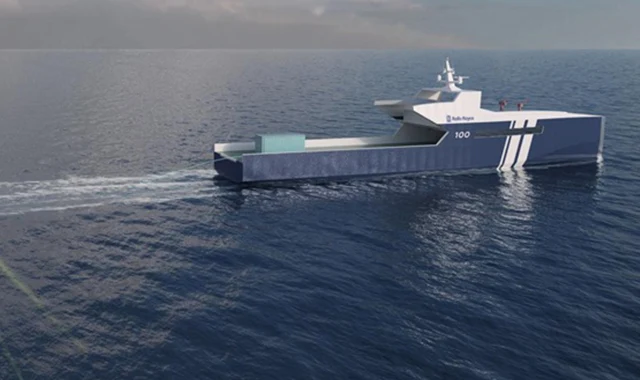Rolls-Royce unveils plans for autonomous naval vessel
The ship concept is designed to be capable of operating offshore for more than 100 days, will shift 700 tons and will reach speeds above 25 knots.Rolls-Royce has unveiled plans for a single-role, autonomous navy vessel concept with a range of 3,500 nautical miles.
The ship concept is designed to be capable of operating offshore for more than 100 days, will shift 700 tons and will reach speeds above 25 knots. The 60-meter-long vessel is designed to perform a series of unique role missions, eg patrol and surveillance, mine detection or fleet screening. The heart of the boat is a robust and reliable propulsion system. This combines proven Rolls-Royce experience in gas and diesel turbines with a proven track record in electric propulsion, power storage and propellers.
According to Benjamin Thorp, Managing Director of Naval Electrics, Automation, and Control at Rolls-Royce, "Rolls-Royce is seeing the interest of the major armies in autonomous ships, rather than remote-controlled ones, reduce crew risk and reduce construction and operating costs.
"Over the next 10 years, Rolls-Royce expects to see the introduction of medium-sized unmanned rigs, particularly in the main armies, as the concept of mixed manned and unmanned fleets develops.".
The largest manned ships will cover multi-role missions. By allowing the composition of the fleet to blend in this way, the marinas will reap the operational and cost benefits of autonomous navy vessel concept.
The initial design features a complete electric propulsion system that requires fewer auxiliary systems (lubrication, cooling system, etc.) and offers better reliability levels than mechanical counterparts. It has two groups of Rolls-Royce MTU 4000 series that provide about 4MW of electrical power to a 1.5MW propulsion unit. An alternative to diesel engines could be small gas turbines, further improving system reliability and reducing on-board maintenance. Azipull permanent magnet propellers, along with a tunnel pusher mounted at the bow, will make the vessel highly maneuverable. To reduce fuel consumption and extend the range of operation, an additional 3000 kWh of energy storage will facilitate efficient low-speed operations and the vessel will also be equipped with photovoltaic solar panels to generate power when the vessel is on hold.
The absence of crew increases the need for very reliable power and propulsion systems. Rolls-Royce's approach is to combine advanced intelligent asset management and system redundancy in a cost-effective way that avoids sacrificing the cost savings and volumes achieved by eliminating the crew. A set of autonomous navy vessel concept support tools, developed by Rolls-Royce, such as energy management, equipment health monitoring and predictive and remote maintenance, will ensure the availability of unmanned vessels.
Many of the technologies needed to make autonomous navy vessel concept ships a reality already exist. Rolls-Royce has created what it believes.





No comments:
Post a Comment